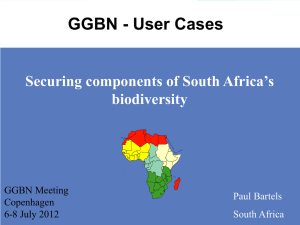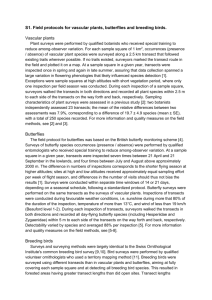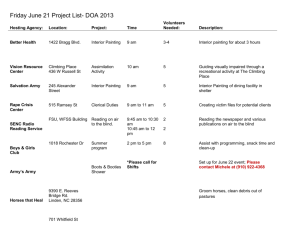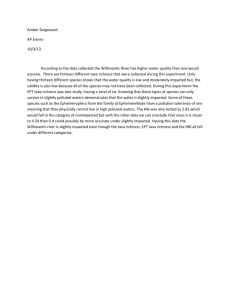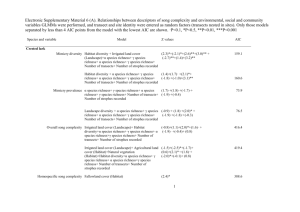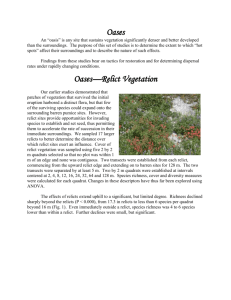regional zoogeography: an analysis of great plains mammals
advertisement
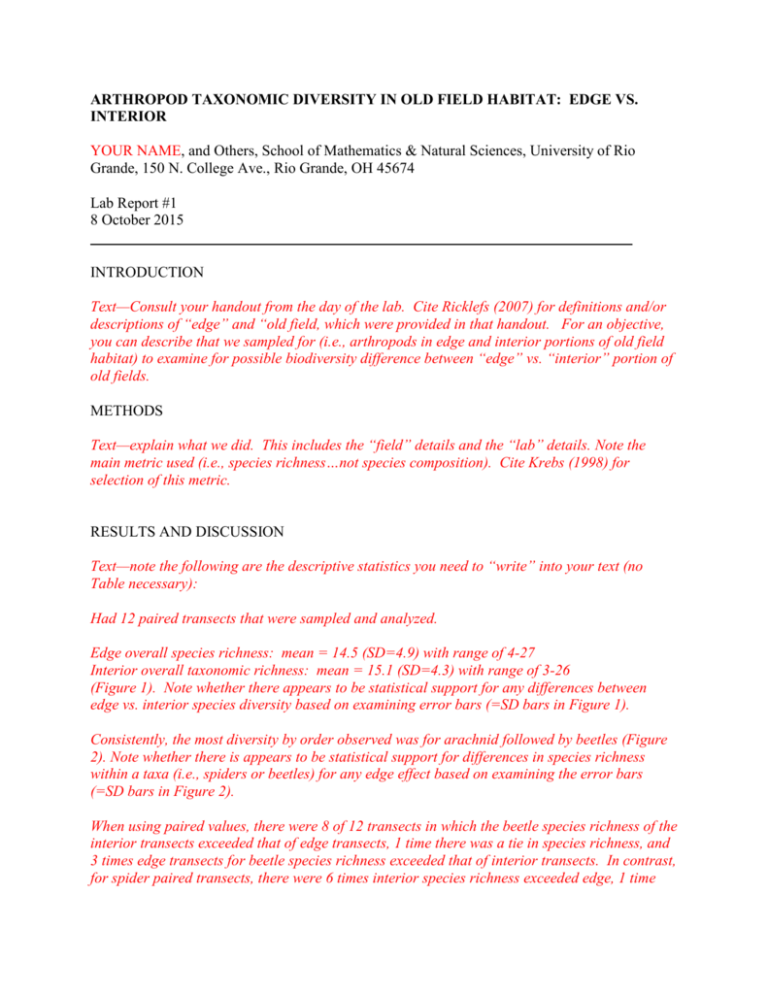
ARTHROPOD TAXONOMIC DIVERSITY IN OLD FIELD HABITAT: EDGE VS. INTERIOR YOUR NAME, and Others, School of Mathematics & Natural Sciences, University of Rio Grande, 150 N. College Ave., Rio Grande, OH 45674 Lab Report #1 8 October 2015 INTRODUCTION Text—Consult your handout from the day of the lab. Cite Ricklefs (2007) for definitions and/or descriptions of “edge” and “old field, which were provided in that handout. For an objective, you can describe that we sampled for (i.e., arthropods in edge and interior portions of old field habitat) to examine for possible biodiversity difference between “edge” vs. “interior” portion of old fields. METHODS Text—explain what we did. This includes the “field” details and the “lab” details. Note the main metric used (i.e., species richness…not species composition). Cite Krebs (1998) for selection of this metric. RESULTS AND DISCUSSION Text—note the following are the descriptive statistics you need to “write” into your text (no Table necessary): Had 12 paired transects that were sampled and analyzed. Edge overall species richness: mean = 14.5 (SD=4.9) with range of 4-27 Interior overall taxonomic richness: mean = 15.1 (SD=4.3) with range of 3-26 (Figure 1). Note whether there appears to be statistical support for any differences between edge vs. interior species diversity based on examining error bars (=SD bars in Figure 1). Consistently, the most diversity by order observed was for arachnid followed by beetles (Figure 2). Note whether there is appears to be statistical support for differences in species richness within a taxa (i.e., spiders or beetles) for any edge effect based on examining the error bars (=SD bars in Figure 2). When using paired values, there were 8 of 12 transects in which the beetle species richness of the interior transects exceeded that of edge transects, 1 time there was a tie in species richness, and 3 times edge transects for beetle species richness exceeded that of interior transects. In contrast, for spider paired transects, there were 6 times interior species richness exceeded edge, 1 time there was tie in species richness, and 5 times edge species richness exceeded that of interior transects. Based on this data, in general is there a trend indicating that perhaps diversity of beetles—more so than spiders—is greatest near the interior of old fields (vs. the interior)? Assuming your answer is “yes”, what would you recommend to further evaluate this possible difference in diversity between edge and interior portions of old field habitat? REVIEW OF STUDY DESIGN AND METHODOLOGY Address in the final two paragraphs what might have affected our a) field sampling results and b) identification results from an observer (aka tech) perspective. (remember—we reviewed these in class). Be sure to address how we could have reduced some of this potential bias and/or improved the “quality” of our data. LITERATURE CITED Krebs, C.J. 1998. Ecological Methodology. Benjamin/Cummings, Menlo Park, California. Ricklefs, R.E. 2007. The Economy of Nature. 5th Edition. W.H. Freeman and Company, New York, New York. Mean (+/-SD) Species Richness 25.0 20.0 15.0 10.0 5.0 0.0 Edge Interior Figure 1. Species richness by transect by position within old field habitat on the University of Rio Grande campus, 8 September 2015. Sampling was done using paired, 20 m transects (n=12). 2 Mean (+/- SD) Species Richness 8 8 7 7 6 6 5 5 4 4 3 3 2 2 1 1 0 0 Edge Interior Beetle Species Edge Interior Spider Species Figure 2. Arthropod species richness by beetles (left) and spiders (right) within old field Habitat on the University of Rio Grande campus, 16 September 2014. Sampling was done using paired 20 m transects (n=12). 3


